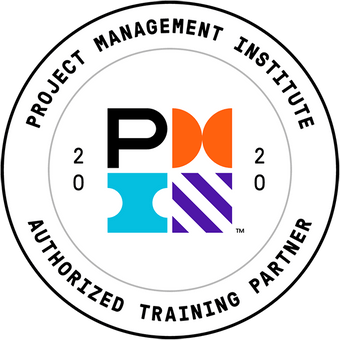The Course includes the following Highlights:
- 37 lessons
- Understand the fundamental financial concepts in business and their uses.
- Interpret data on financial reports and how these reports impact each other.
- Understand how budgets and estimates are used to plan and control costs.
- Utilize ratios and measures to gain insight into profitability and performance.
- Determine how forecasting and tracking project expenses is an indicator of project success.
- Employ Earned Value analysis and forecasting for planning, scheduling, and resource management.
- Earn 18.5 contact hours or PDUs toward your project management education for certification with PMI.
Once enrolled, our friendly support team is here to help with any course-related inquiries.
Summary
- Skill level: Beginner
- Lessons: 37
- Pre-requisites: None
- Estimated study time: 18h 30m for all materials
- Certificate: Yes
- Accredited by: CPD
- Video duration: 3h 11m
Features
Premium video tutorials
Personalized Learning
Learn at your own pace
Tests and Quizzes
Award winning instructors
Get Certified
Mobile - Learn on the go
Regularly updated content
Accreditations & Approvals
All courses under each learning path are accredited and approved by one or more of the following bodies as is applicable.



Instructors
All courses are taught by reputed trainers with relevant accreditations and industry experience.
Modules
Amount and Timing
There are two equally important attributes of every financial transaction, the amount and the date it occurred. Both are required for financial reporting and analysis.
Revenues and Profits
Revenue is the amount of money that a company receives for selling its goods and services. Profit is the amount of money that a company earns after it has paid all its expenses.
Cost and Investment
Both costs and investments result in spending money. Costs are spending money to run the business and investments are spending money to prepare for the future.
Earnings Statement Part 1
The Earnings Statement is a financial report that shows business profitability over some time period.
Earnings Statement Part 2
The Earnings Statement is a financial report that shows business profitability over some time period. This lesson will focus on the revenue portion of the Earnings Statement.
Earnings Statement Part 3
The Earnings Statement is a financial report that shows business profitability over some time period. This lesson will focus on the expense portion of the Earnings Statement.
Balance Sheet Part 1
The Balance Sheet is the financial report that shows what the business is worth at some instant in time.
Balance Sheet Part 2
The Balance Sheet is the financial report that shows what the business is worth at some instant in time. This lesson will focus on the Asset side of the Balance Sheet.
Balance Sheet Part 3
The Balance Sheet is the financial report that shows what the business is worth at some instant in time. This lesson will focus on the Liabilities and Equity side of the Balance Sheet.
Cash Flow Statement Part 1
The Cash Flow Statement is a financial report that shows how well the company was able to convert business activity into cash over some time period.
Cash Flow Statement Part 2
The Cash Flow Statement is a financial report that shows how well the company was able to convert business activity into cash over some time period. This lesson will focus on sources of cash.
Cash Flow Statement Part 3
The Cash Flow Statement is a financial report that shows how well the company was able to convert business activity into cash over some time period. This lesson will focus on uses of cash.
Relationships Between Financial Statements
Each of the financial statements provides insight on an aspect of the business financial status and structure. These accounts across the statements are related, and changes to values will likely impact multiple statements.
Profit Measures
When calculating profitability, the different profit measures provide insight into the most significant factors that are creating corporate profit or loss.
Return on … Ratios
Return ratios are normally used for comparing companies or comparing the past performance of a company with its present performance.
Cost Account Characteristics
It is important to know what category of account you are working with when budgeting and tracking spending. The different categories of accounts behave differently so knowing which category you are working with will provide insight into the budgeting and tracking process.
Strategic Planning and Budgeting
Most businesses prepare a strategic plan that projects how the company will achieve or maintain a competitive advantage. It is used to guide the budgeting process.
Business Budgeting
Business budgets are the financial plan of the business. They are normally created for one year at a time and allocate the spending and revenue across business units, departments and accounts.
Estimating
Estimating is used when planning and budgeting business costs or revenues. The estimate needs to include both the amount and the timing of the transaction.
Capitalization and Amortization
Whenever a company purchases an asset with long term value, it must be capitalized. Every asset that is capitalized is then depreciated, which is special form of amortization.
Depreciation
If you capitalize a fixed asset, you are required to depreciate it on the business financial books.
Financial Reserves
A Financial Reserve is money that has been budgeted for a general purpose (department, project or initiative, but not specifically allocated to a task or activity.
Budget Baseline
Budget baselines should be used if costs must be controlled within a department or on a project.
Developing a Business Case
The business case provides the business rationale, normally in financial terms, of why a project should be done.
Return on Investment (ROI)
Return on Investment is a financial calculation to determine whether the business benefit of an investment is worth the cost.
Payback Period
The Payback Period is a Return on Investment analysis that determines the amount of time needed to accumulate enough benefit to pay for the cost of the project.
Breakeven Point
The Breakeven Point is a Return on Investment analysis that determines the number of units or amount of sales that are needed to accumulate enough benefit to pay for the cost of the project.
Net Present Value (NPV)
The Net Present Value is a Return on Investment analysis that determines a value in monetary terms for the accumulated cost and benefits of a project over a set time period.
Internal Rate of Return (IRR)
The Internal Rate of Return is a Return on Investment analysis that determines an “equivalent interest rate” that if applied to the investment would yield a similar return as the project is forecasted to return over a set time period.
Cost Behavior
The business financial system records costs based upon the cost account type. The costs are often accrued near the end of fiscal quarter or year.
Tracking Project Expenses
Project costs and investments are the business expenses required to complete a project. Tracking the magnitude and timing of those costs are important indicators of project success.
Cost Variance Reporting
Cost variance reporting is the calculation and reporting of costs that are different than what was expected by the budget or standard.
Forecasting Expenses
Financial forecasts for the final cost of activities are created to allow activity managers to make wise business decisions. The approach used for forecasting should vary based upon the nature of the activities being forecasted.
Earned Value Analysis
Earned Value Management is a comprehensive project management technique that combines scope, schedule and resource management into one set of measures. It is used for planning, variance analysis and forecasting.
Determining the Earned Value
Earned Value Management is a comprehensive project management technique that combines scope, schedule and resource management into one set of measures. The Earned Value analysis rests on task level planning and earned value calculations.
Earned Value Variance Analysis
Earned Value Management is a comprehensive project management technique that combines scope, schedule and resource management into one set of measures. The Earned Value variance analysis is an analytical method for separating cost and schedule effects from financial variances.
Earned Value Forecasting
Earned Value Management is a comprehensive project management technique that combines scope, schedule and resource management into one set of measures. With these measures a project forecast can be generated.
Target Audience
- Graduates exploring placement in the entry-level Financial positions across industries
- Finance professionals needing upskilling to be future-ready or become more productive in their current roles
- Experienced individuals exploring Finance for Project Managers roles to join the workforce
How do I Access The Program
- Buy the course online
- Save your payment transaction receipt for any future reference
- Our team will share the credentials to enable you access your course online within 2 business days of payment transfer
Bulk Orders
Incase you are looking for bulk user licenses, or customized Learning Paths for various Job Roles, reach out to us with your detailed requirements.






Reviews
There are no reviews yet.